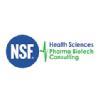Pharmaceutical Microbiology - QP Module
Royaume-Uni, York
Course Overview :
A highly interactive 5-day course designed to provide the aspiring Qualified Person and pharmaceutical quality professionals with the knowledge and understanding they need to be able to assess microbiological risks in the pharmaceutical manufacturing environment, to assist in the design and implementation of comprehensive microbiological control strategies and to take informed decisions when microbiological problems occur.
About This Course :
Microbiological contamination of products and processes continues to be a major concern to the industry and its regulators. The potential impact of such contamination can be catastrophic. Put simply, microbial contamination can kill your patients and your business! This course, for both non-biologists and microbiologists, is designed to provide you with the knowledge, confidence and decision making risk assessment skills to prevent this happening.
This course is approved by the Royal Society of Chemistry as suitable for their members’ continuing professional development.
Registration link :
- NSF Online registration : Link
NSF contact :
- Phone : +44 (0) 1751 432 999
- email : pharmacourses@nsf.org
- visit : www.nsf.org/info/pharma-training
Note :
- All of our courses can be brought on-site, tailored to your key concerns and delivered at a time that suits you.
Key Learning Objectives :
- The basic characteristics of all microorganisms found in your premises – how they get there and how you can remove them
- How to sample, isolate and identify these organisms
- How to prevent contamination of your products and processes using risk management and assessment tools and techniques
- Interpretation of data
- QP decision making
- Satisfying the regulator and protecting your patient
- Understanding microorganisms
- Understanding micro methods
- Microorganisms and your products, procedures and plants
Course Outline :
Microorganisms: Understanding your ‘Enemy’!
- The physiology and key characteristics of microorganisms
Routes of contamination Microbiological Methods: ‘How to’ Guidance on…
- Sampling
- Isolation and enumeration (counting)
- Identification: How and when to identify microorganisms
- Tests for sterility and preservative efficacy
- Process Analytical Technology (PAT)
- Rapid (non-culturable) methods
- The microbiology laboratory: Good Laboratory Practice
- Monitoring methods
Microorganisms: Your Products, Procedures & Plants
- Raw materials
- Contamination control strategies
- Microbiological aspects of good plant and process design
- How to use media fills to assess the vulnerability of your process to contamination
- How to use risk assessment and hazard analysis to identify and remove contamination risks
Microorganisms: How to Remove Them!
- Good sanitization practices
- The kinetics of sterilization
- Sterilization
- Antibiotics: How they work and how you test them
Decision Making and Problem Solving
- How to interpret microbiological data and trends
- How to identify the root cause of contamination incidents
- How to use risk assessment techniques to assess the impact of ‘failures’ on product quality and patient safety
Résumé
A microbiologist by training, Erika has over 25 years’ experience in the pharmaceutical industry in both QC and QA and has worked with all the major dosage forms. In addition she has expertise in the cosmetics and toiletry industries, and is a previous Chair of the CTPA Microbiology sub-committee. She is eligible to act as a QP and is an honorary lecturer at the University of Strathclyde.
A microbiologist by training, Samantha has over 20 years’ experience in the pharmaceutical industry in technical, manufacturing and QA roles. A Qualified Person since 2005, Samantha has worked with all the major dosage forms and has extensive experience in auditing of finished dose manufacturing and packing sites, starting material suppliers, component manufacturers and quality control facilities.


